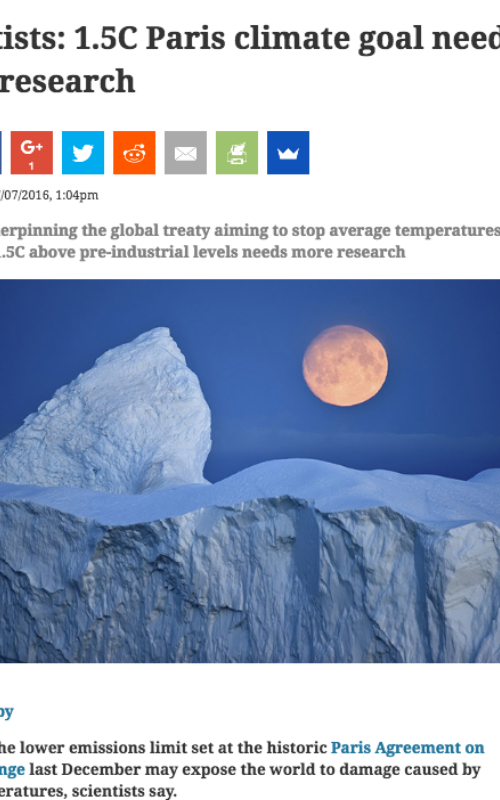Media coverage
Share


The Washington Post
375 U.S. scientists have addressed the perils of the presidential nominee's threat to 'cancel the Paris Agreement' in an open letter published during the Climate Week in New York. This article also outlines some of the contents of the Climate Analytics' Climate Week event.
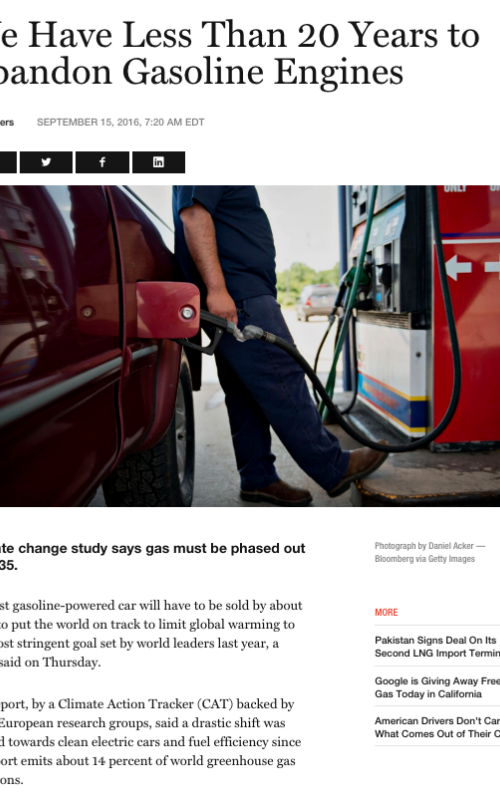
Fortune
The last gasoline-powered car will have to be sold by about 2035 to put the world on track to limit global warming to the most stringent goal set by world leaders last year, according to a Climate Action Tracker report.

Reuters
The last gasoline-powered car will have to be sold by about 2035 to put the world on track to limit global warming to the most stringent goal set by world leaders last year, according to a new report by a Climate Action Tracker (CAT).
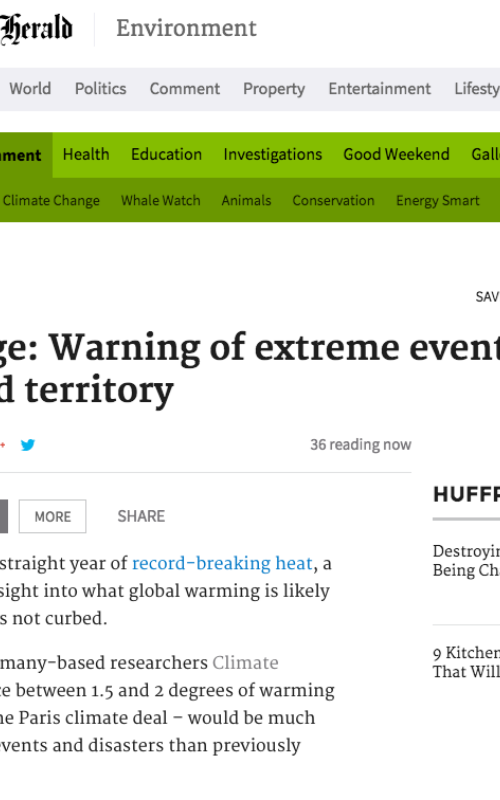
Sydney Morning Herald
As the world endures a third straight year of record-breaking heat, a new study has given fresh insight into what global warming is likely to mean for Australians if it is not curbed. Researchers at Climate Analytics found the difference between 1.5 and 2 degrees of warming – the two goals included in the Paris climate deal – would be much greater in terms of extreme events and disasters than previously believed.
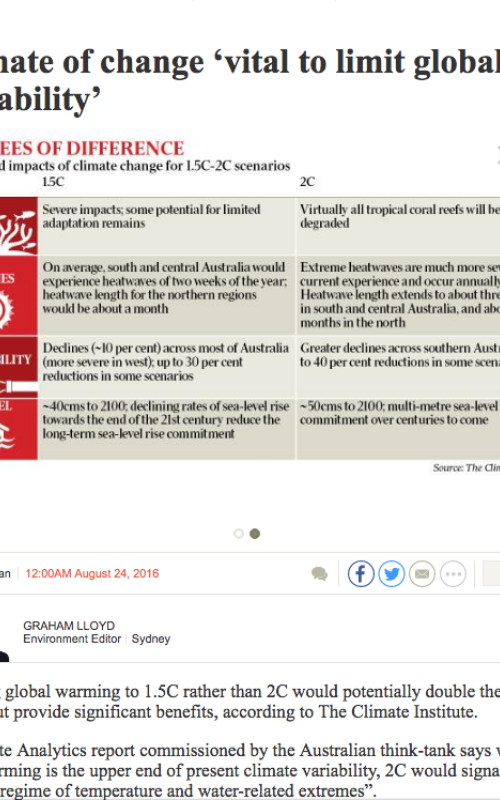
The Australian
Limiting global warming to 1.5C rather than 2C would potentially double the cost of action but provide significant benefits, according to The Climate Institute. A Climate Analytics report commissioned by the Australian think-tank says where 1.5C warming is the upper end of present climate variability, 2C would signal “a new climatic regime of temperature and water-related extremes”.

The Conversation
Australia could avoid punishingly long heatwaves and boost the Great Barrier Reef’s chances of survival by helping to limit global warming to 1.5℃ rather than 2℃, according to a Climate Analytics report released by the Climate Institute today.
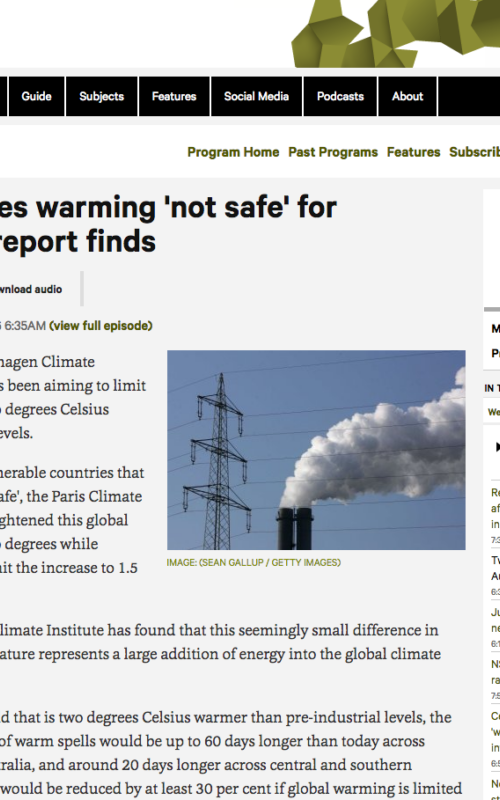
ABC Radio National
A new report for the Climate Institute has found significant differences between 1.5 and 2 degrees Celsius warming for Australia. Interview with Climate Analytics CEO and report author Bill Hare.
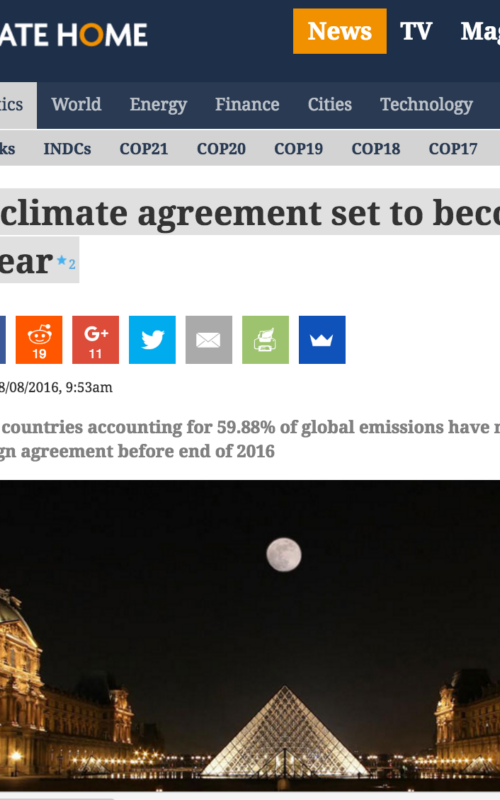
Climate Home
The Paris climate agreement will become international law by the end of 2016 if countries stick to the promises they have made. According to Climate Analytics, 57 countries have now indicated they will ratify or have already ratified the agreement by year’s end. They account for 59.88% of global emissions.
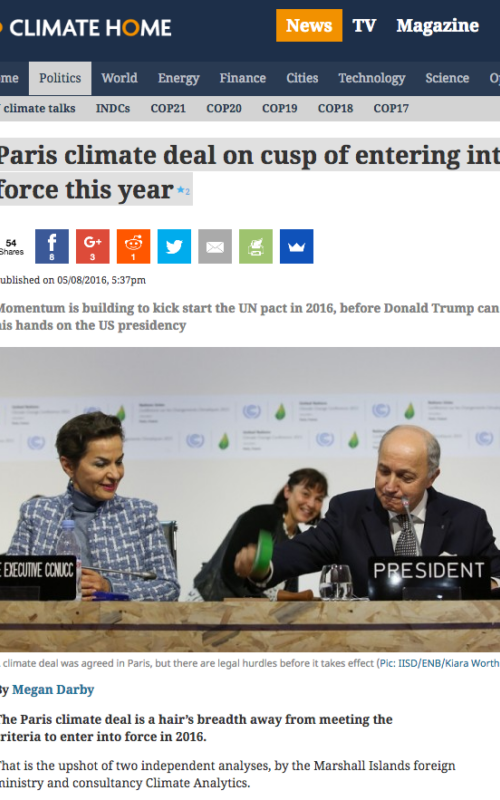
Climate Home
The Paris climate deal is a hair’s breadth away from meeting the criteria to enter into force in 2016. That is the upshot of two independent analyses, by the Marshall Islands foreign ministry and consultancy Climate Analytics.
